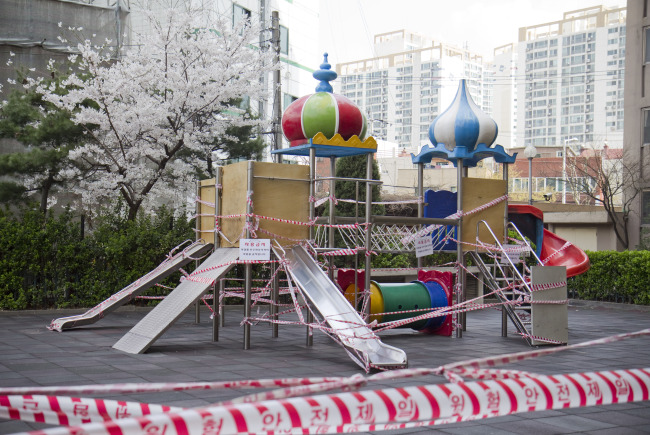[Weekender] Playground shortage hits low-income families
Underprivileged children left with poor play options
By Kim Min-jooPublished : Oct. 20, 2017 - 15:48
Children in Korea, especially those living in low-income areas, are missing out on play opportunities because of a shortage of accessible playgrounds, according to a report by Save the Children Korea on Sept. 5.
The lack of safe open spaces in urban areas means play options for children from low-income families are lackluster, it said. They often cannot afford pay-per-use playgrounds or the kids cafes now proliferating across cities. Many playgrounds in poorer residential areas also have been closed due to safety concerns, or are being torn down to make space for more parking.
The lack of safe open spaces in urban areas means play options for children from low-income families are lackluster, it said. They often cannot afford pay-per-use playgrounds or the kids cafes now proliferating across cities. Many playgrounds in poorer residential areas also have been closed due to safety concerns, or are being torn down to make space for more parking.

More than 170 playgrounds across the nation have been shut down after receiving a “dangerous” grade in governmental safety checks, the report said, citing statistics provided by Rep. Hong Chul-ho. More than 70 percent of the closed playgrounds are situated in small-scale or aging residential complexes, where residents cannot afford remodeling costs.
Following the enforcement of the Safety Supervision Law of Children’s Play Facilities in 2015, some 1,740 antiquated, unsafe playgrounds were closed as a result of the nationwide safety check. Those in charge of the closed playgrounds were required to address the safety concerns before reopening them, and the repair costs could be partially subsidized by the local government. However, because the subsidy did not cover all the costs of repair, a significant number of playgrounds remain closed, particularly those in low-income residential areas.
Playgrounds in residential compounds are also at risk of being torn down to make way for more parking spaces. The regulation enforcing one playground per 50 households in a residential compound was eased to 150 households in 2013. As a result, playgrounds have been torn down in small apartment complexes. According to the report from Save the Children Korea, 410 playgrounds have been demolished in four metropolitan cities over the past five years.
“The rich-poor gap in terms of access to quality play is causing a concern, and the increase in commercial play spaces doesn’t make up for the shortage of public playgrounds.” Je Chung-man from Save the Children Korea told The Korea Herald, stressing the importance of equal play opportunities for children.
While the availability of public playgrounds has seen a decrease, the number of for-profit play spaces has increased from 587 in 2014 to 788 in 2017, according to government data. The number of play areas attached to commercial establishments like restaurants and malls shot up from 931 to 1,688 during the same period.
By Kim Min-joo (mjk625@heraldcorp.com)







![[KH Explains] How should Korea adjust its trade defenses against Chinese EVs?](http://res.heraldm.com/phpwas/restmb_idxmake.php?idx=644&simg=/content/image/2024/04/15/20240415050562_0.jpg&u=20240415144419)










![[Today’s K-pop] Stray Kids to return soon: report](http://res.heraldm.com/phpwas/restmb_idxmake.php?idx=642&simg=/content/image/2024/04/16/20240416050713_0.jpg&u=)